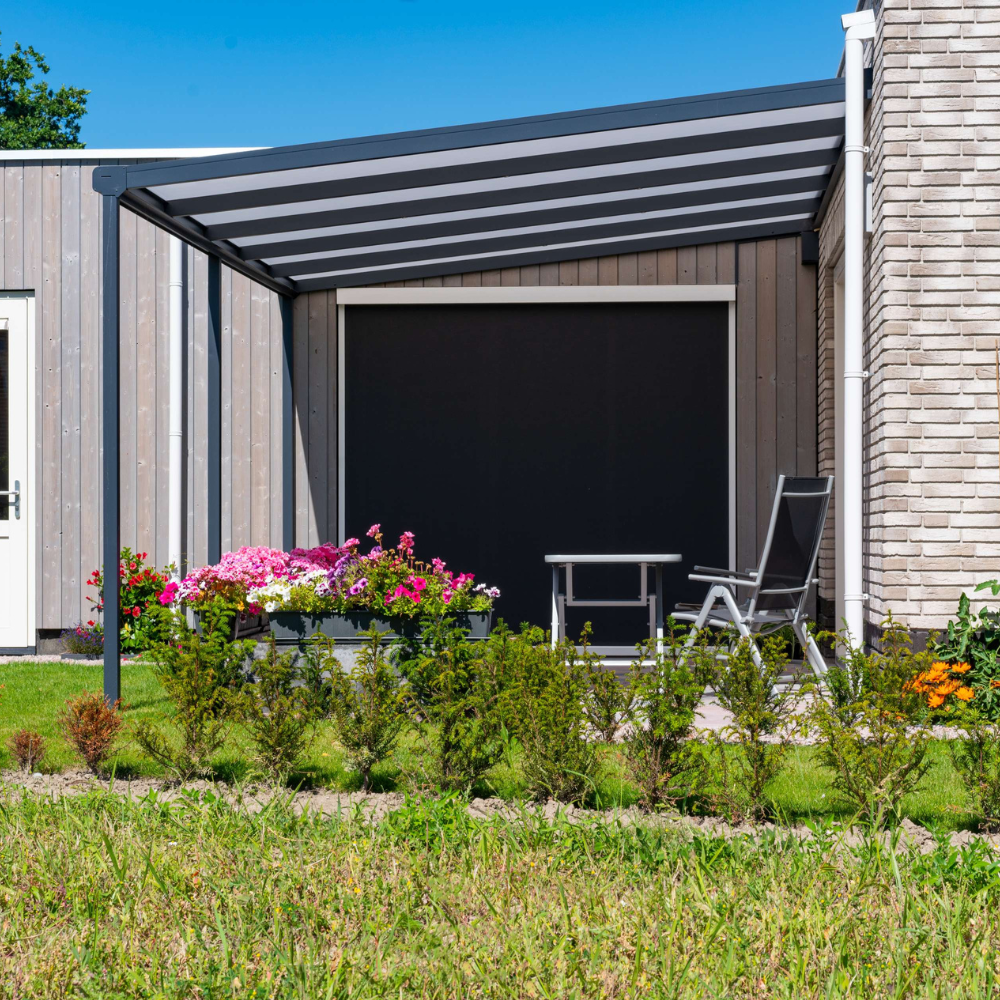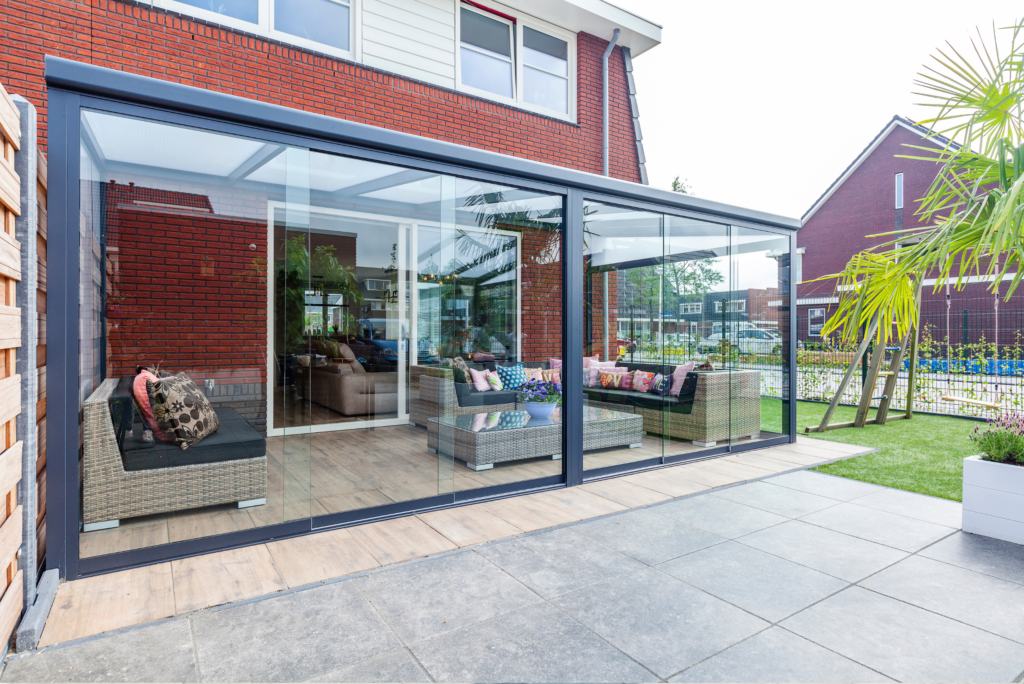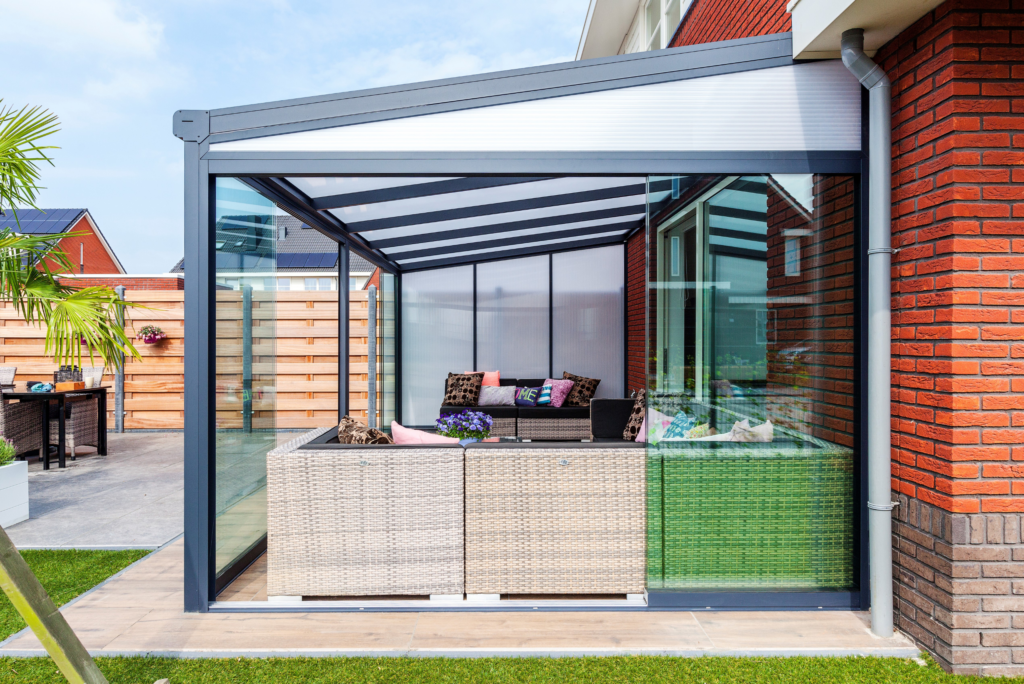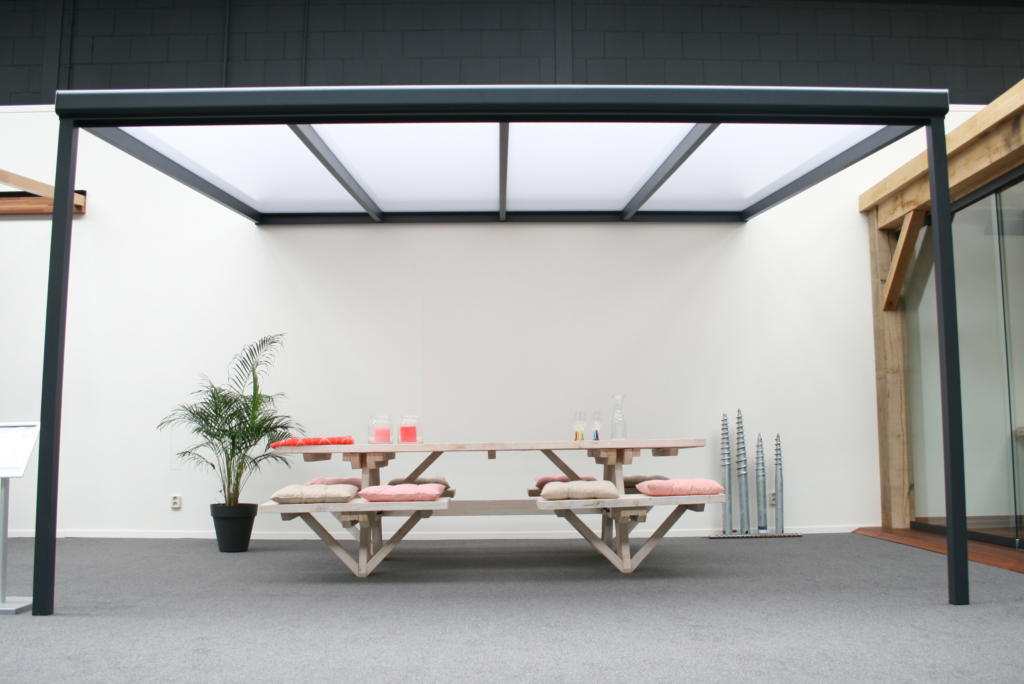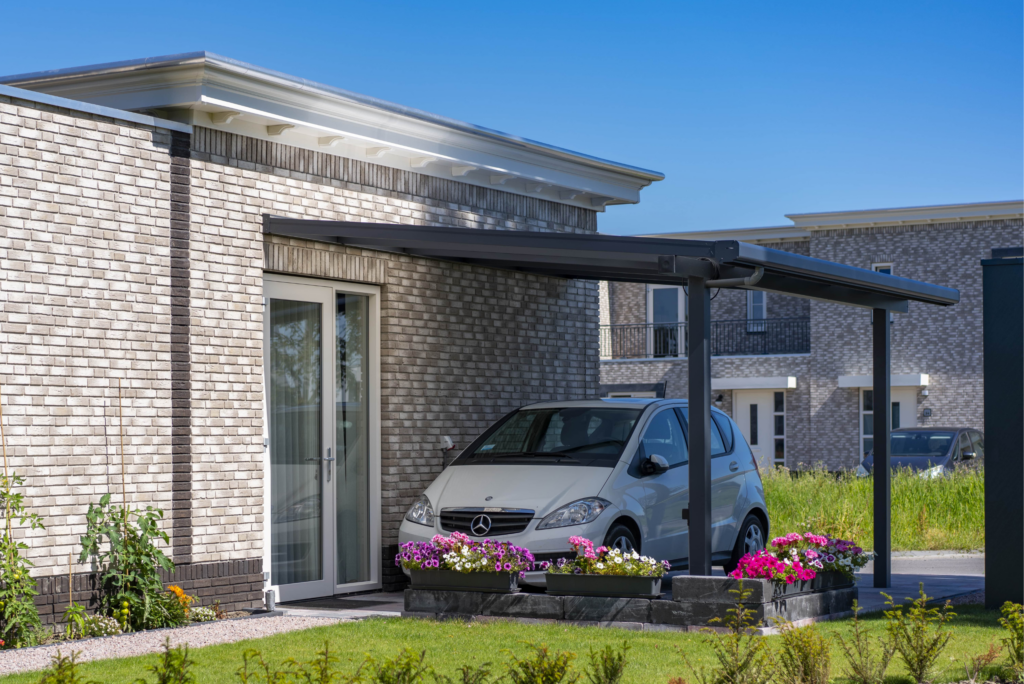TotaLuxe Moher Aluminium Veranda
From: £1,920.00
Slim, elegant and competitively priced
The Moher veranda features a more robust construction than typically found in this price range, enhancing its overall quality and value. Its intermediate beams are equipped with aluminium top frames instead of rubber, providing extra sturdiness and durability. Despite this solid build, the Moher maintains a slim, elegant, and timeless design.
With the Moher, you can enjoy your garden exactly as you envision it, all under the canopy of a refined and enduring design.
Customise your polycarbonate roof with the following options: clear, opal, ultra clear or solar control. Additionally, you have the choice from either grey or cream for the colour of your aluminium posts.
Elevate your outdoor living experience by adding polycarbonate walls, aluminium walls, or glass sliding doors to transform your space into a personalized enclosed garden room.
Colours (profiles): Cream RAL9001 / Grey RAL7024
Gutter: Standard half-round
Posts: Square
Roofing Polycarbonate: Opal / Clear / Ultra clear / Solar control
Width (mm): 4045 / 5045 / 6045
Projection (mm): 2500 / 3000 / 3500
As an added option, the Moher can be expanded with various accessories, such as a glass sliding doors, LED lighting or side panel.
What is a veranda?
A veranda is a roofed structure that is connected to your house which covers an outdoor area. The roof of a veranda is made from polycarbonate, providing you with the perfect outdoor shelter while still allowing plenty of light. These simple yet robust structures are perfect for adding additional space to your home to relax with friends and family all year long.
Does a veranda require planning permission?
In most cases, no! According to the council’s planning team, a veranda is classified as a temporary structure. This means you don’t need planning permission as long as it is under 2.5 meters in height and doesn’t cover more than half of your outdoor space. However, we recommend checking with your local council to ensure you meet all specific requirements.
How long will my veranda last?
Our verandas are built to last. With proper care and maintenance, you can expect your veranda to have a lifespan of well beyond a decade. The materials used are weather-resistant and designed to withstand the elements, ensuring you enjoy your outdoor space for many years to come.
What is the veranda roof made of?
The roof of our verandas is typically made from high-quality 16mm polycarbonate. Polycarbonate panels are lightweight, durable, and provide excellent UV protection. Our polycarbonate panels come in 4 different styles: Clear, Opal, Ultra-Clear and Solar Control.
Can I add doors to a veranda?
Yes, you can! By adding our stunning Aura Glass Sliding doors you can transform your new aluminium veranda to a garden room. Enjoy flexibility to open and close the sides of your outdoor veranda when the weather takes a turn for the worse or to keep your friends and family cosy. Sit comfortably under your veranda when the sun is shining but the wind is blowing.
How do I install a veranda?
Installing a veranda can be a straightforward process if you follow the instructions carefully. Each veranda comes with a detailed installation manual and all the necessary hardware. Generally, the installation involves the following steps:
-
- Preparing the site and ensuring it is level.
- Assembling the framework according to the instructions.
- Securing the framework to the ground and the adjoining building.
- Installing the roof panels.
- Adding any finishing touches, such as guttering or decorative elements.
For those who are not confident in their DIY skills, we recommend hiring a professional installer to ensure the veranda is safely and correctly assembled. If you need assistance finding a qualified installer, our customer service team is here to help.
What maintenance is involved for a veranda?
We recommend that you maintain and clean your veranda at least once a year. Check whether the screw connections are tight. If not, tighten them firmly. The aluminium profiles and roofing sheets that are dirty can be cleaned with lukewarm water and a cleaning product.
-
- Use a soft brush or sponge.
- Never use abrasives, aggressive solvents or a pressure washer.
- Wet first and rinse off with lots of water, and then wipe with a soft cloth


